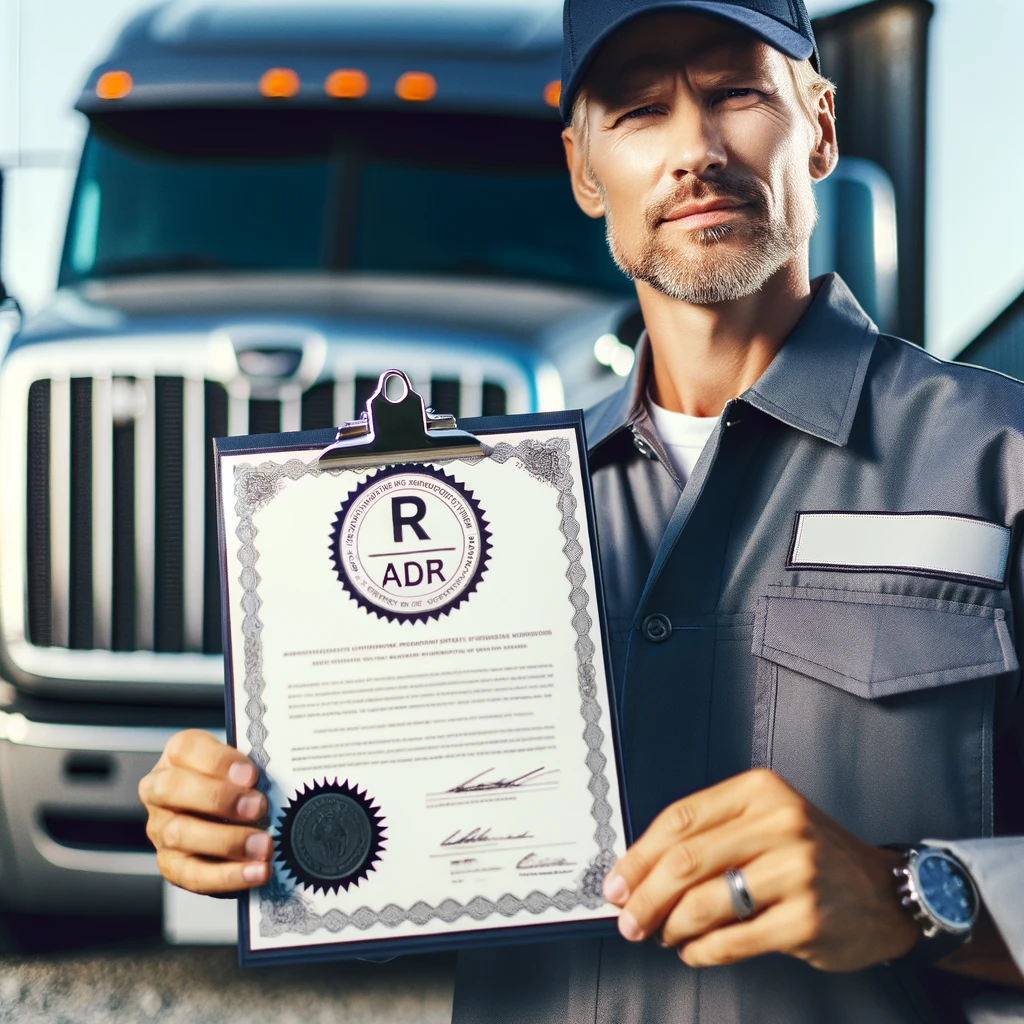Transport, carriage of hazardous waste - a mini-guide
We recently published a mini-guide on preparing for waste shipments in Europe. We have received a lot of feedback that the transport of hazardous waste is a problem, so in this article we will take a closer look. We look forward to reading it.
Amber is worth its weight in gold - the essence of classification in waste transport
From our previous guide you know that the classification of waste stems from two documents - Regulation 1013/2006 EC and the Basel Convention. Where did these come from in the first place and why do they matter so much?
Regulation 1013/2006 is a European Union law, established on 14 June 2006. It regulates the transport of waste, including hazardous waste, between EU member states and within non-EU countries. It lays down rules and procedures for transport authorisations, consignment notes, information obligations and control of waste shipments.
Basel Convention is an international agreement of 22 March 1989 (entered into force on 5 May 1992) signed by UN countries. Its aim is to control the transboundary movement of waste, especially hazardous waste. All with the aim of minimising their impact on the environment and human health. The Convention lays down rules on the identification, safeguarding, movement and disposal of waste.
Transport companies must comply with the provisions of Regulation 1013/2006, which sets out specific rules and requirements for the transportation of waste. They must not, of course, forget the Basel Convention, which aims to ensure the safe and responsible management of waste at international level.

Transport of hazardous waste and driver entitlements
When researching the topic of transporting hazardous waste, you have certainly come across the issue of ADR training courses. These are important because they prepare drivers to transport different types of hazardous waste according to the standards of the ADR Convention. There are 9 ADR classes, which define the characteristics of the materials and how they should be secured and transported. Drivers can receive training in any of these classes, although they often focus on their company's area of operation. For example, if a company transports explosives, drivers will choose Class 1 training, while if they are to haul radioactive materials, they will focus on Class 7.
ADR classes
There are nine ADR classes:
- Class 1: Explosives and explosive articles: Includes materials that can cause an explosion or that are themselves susceptible to fire.
- Subclass 1.1: Materials and objects that have a very high risk of explosion.
- Subclass 1.2: Materials and objects that have a high risk of explosion, but less than subclass 1.1.
- Subclass 1.3: Materials and objects that have a lower risk of explosion but can still cause great damage.
- Subclass 1.4: Materials and objects that are of low sensitivity to fire but may cause a low hazard in the event of an explosion.
- Subclass 1.5: Explosives, dangerous only in situations where fire is in direct contact.
- Subclass 1.6: Objects that do not cause an explosion but may produce hazardous chemical reactions when in contact with water or moisture.
- Class 2: Gases: Includes gaseous materials under pressure that may be flammable, toxic or otherwise hazardous.
- Class 3: Flammable liquids: Applies to substances that are flammable, such as petrol, diesel, alcohol or acetone.
- Class 4: Flammable substances: It is divided into two subclasses:
- Subclass 4.1: Flammable, self-reactive substances.
- Subclass 4.2: Substances susceptible to spontaneous combustion.
- Class 5: Oxidising substances and organic peroxides: Includes substances that can increase the rate of combustion of other substances and substances containing peroxide bonds.
- Subclass 5.1: Oxidising substances.
- Subclass 5.2: Organic peroxides.
- Class 6: Toxic and infectious substances: Applies to substances that may be toxic to health or the environment, as well as infectious materials.
- Subclass 6.1: Toxic substances.
- Subclass 6.2: Infectious materials.
- Class 7: Radioactive materials: Includes substances that emit nuclear radiation.
- Class 8: Caustic and corrosive substances: Applies to substances that can cause corrosion or tissue damage.
- Class 9: Miscellaneous hazardous materials and objects: Includes substances and objects that do not fit into the other categories but are still considered hazardous during transport.
Carriage of hazardous waste - marking of vehicles
In order to know how to mark the vehicle with which you want to transport waste that falls under ADR regulations, you need to ask yourself - how will I transport it? The method of marking will depend on:
- transport in units (e.g. in wide body packs)
- bulk transport
- transport by tanker
The necessary signage should include the following data:
- Country code: Two or three letters which identify the country in which the vehicle was homologated. For example, "PL" for Poland.
- Vehicle approval number: This is a unique approval number assigned by the competent authorities of the country concerned.
- UN Code: Identification number according to the UN system, assigned to the hazardous material concerned. For example, "UN 1202" for petrol.
- Name of the material: Short name or description of the hazardous material being transported.
- Hazard class: Identifies which ADR class the material being transported belongs to. This could be, for example, "Class 3" for flammable materials.
- Hazard category (or a code letter): For some materials, a code letter may be displayed which further identifies the hazard category, for example '1' for explosives.
- Warning symbols: Warning symbols such as the "fire" symbol for flammable materials or the "explosion" symbol for explosives may be displayed on the board.
What should be included in the car's equipment?
You already know what should be on the vehicle, but do you know what it should be equipped with? Vehicles transporting ADR materials must have the right equipment to ensure the safe transport of hazardous materials. Here are some items that are often required:
- First aid kit: Must include basic first aid supplies for accidents or incidents (bandages, plasters, dressings, disinfectant preparations).
- Fire extinguisher: A fire extinguisher of the appropriate class and capacity for the materials being transported and the nature of any hazards is required.
- Electrically charged shields: For materials that can generate electrostatic charges, it is necessary to equip the vehicle with suitable electrically charged covers.
- Spill kit: Consists of tools and materials for containment and elimination of hazardous material spills, such as sorbents, spill bags, absorbents, etc.
- Emergency telephone: Should be readily available in case of an emergency to contact the emergency services or relevant control authorities.
- Driver's personal equipment: The driver should be equipped with appropriate personal protective equipment such as helmet, safety goggles, gloves, etc., if required by the type of materials being transported.
- Emergency marking: The vehicle must be equipped with a warning triangle and other appropriate emergency signage to signal danger in the event of an accident or breakdown.
Transport of hazardous waste - labelling of goods
That's right, vehicle marking is not everything. The packaging of the goods must also meet certain conditions:
- ADR materials must be placed in appropriate packaging that provides an adequate level of protection and safety during transport. These packages need to be adapted to the type of material they are carrying in order to prevent leakage, damage and other hazards.
- Packages of hazardous materials must be appropriately labelled in accordance with ADR regulations. These markings contain information on the hazard class and category, UN number, name of the substance, warnings on safe handling of the material, and other relevant information for the safe transport and handling of the material.
- Every package of ADR material must contain a safety data sheet (SDS). This is a document detailing the chemical properties, safety and how to deal with an accident or exposure to the substance.
- Labels affixed to packaging must be clear, durable and easily visible. They must comply with the requirements for colour, symbols and text to enable the contents and the hazards of the material to be quickly identified and understood.
What else to look out for
The transport of hazardous waste is characterised by very high risks. You must take the necessary steps to safeguard not only the vehicle or the goods, but also the driver. It is important to:
- The vehicle was equipped with a telemetry system to check its location. All this was done so that, if necessary, the appropriate services could be quickly dispatched to it or it could be directed to the nearest service centre.
- The driver had the necessary documents and certificates proving his right to carry out the transport of hazardous materials. He should also be able to prove that the goods he is transporting meet all standards and are properly secured.
- The car was regularly inspected in the sense that it was always in working order and ready to go. This will avoid many dangerous situations
- Check meteorological conditions regularly. You can have expensive equipment and well secured goods on your car, but if the car is not adapted to the road conditions it will be of little use.
- Run regular reports to know how the waste transports are going, if there are any problems and what the routes of travel are. This helps to better organise future transports and avoid problems.
Remember, transporting hazardous waste requires adequate preparation, attention to safety and compliance with regulations and industry standards. Be aware of the risks and take precautionary measures to ensure the safe and effective transport of hazardous materials.







